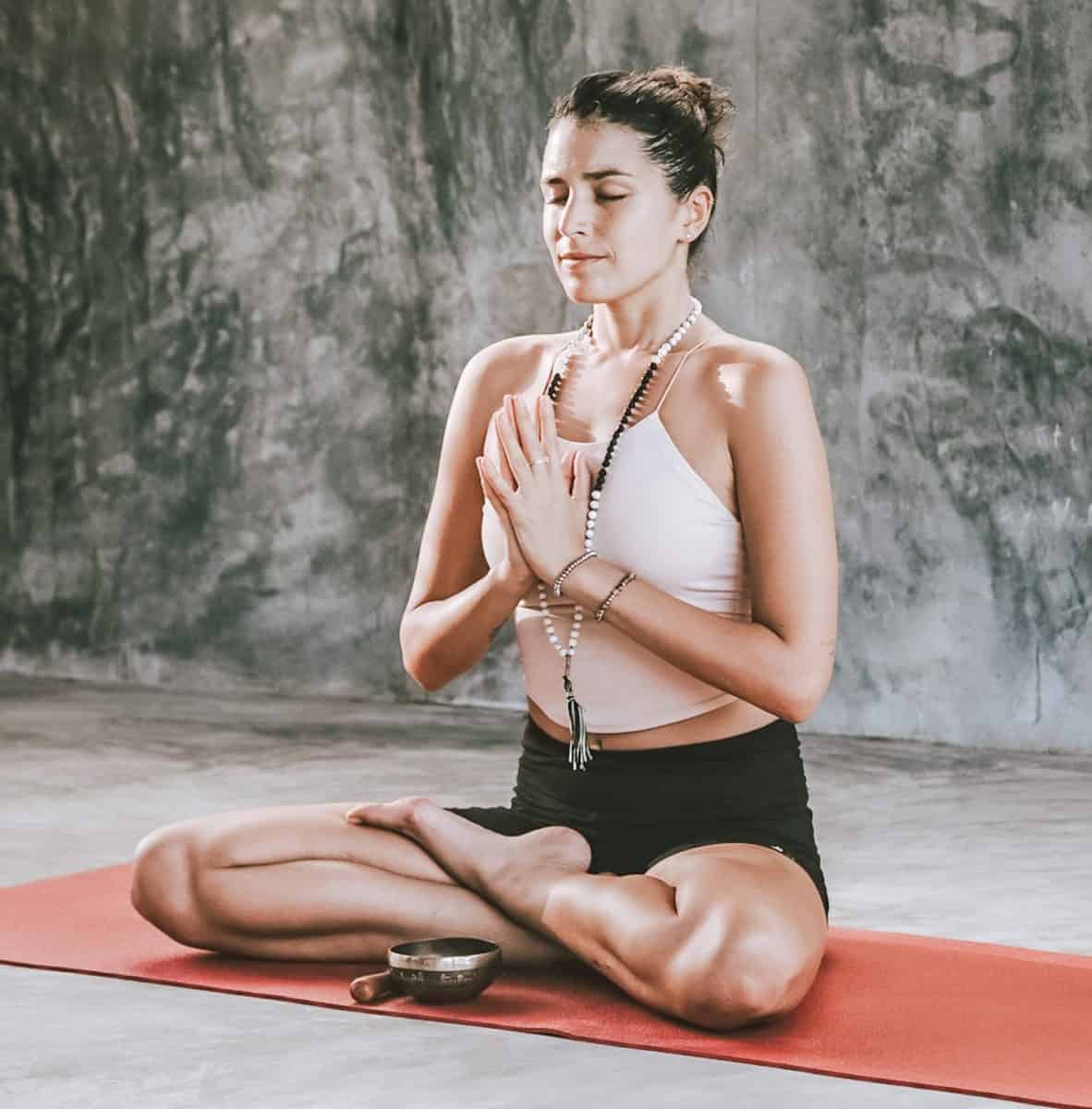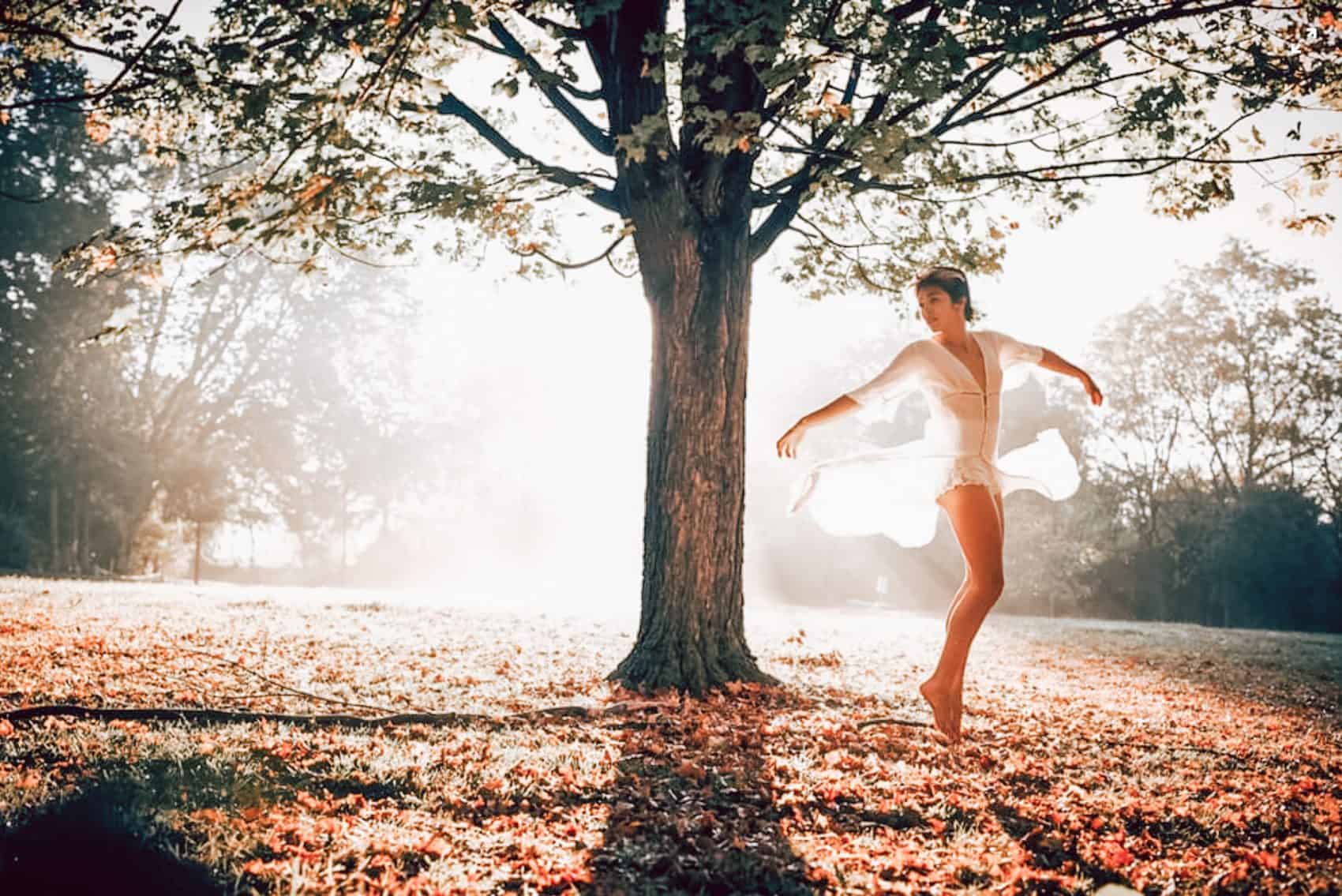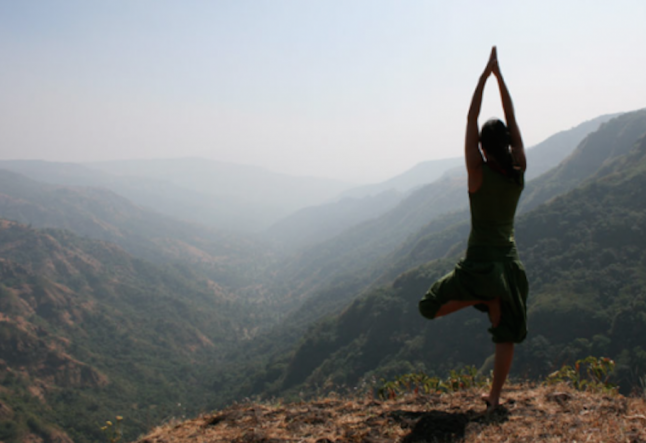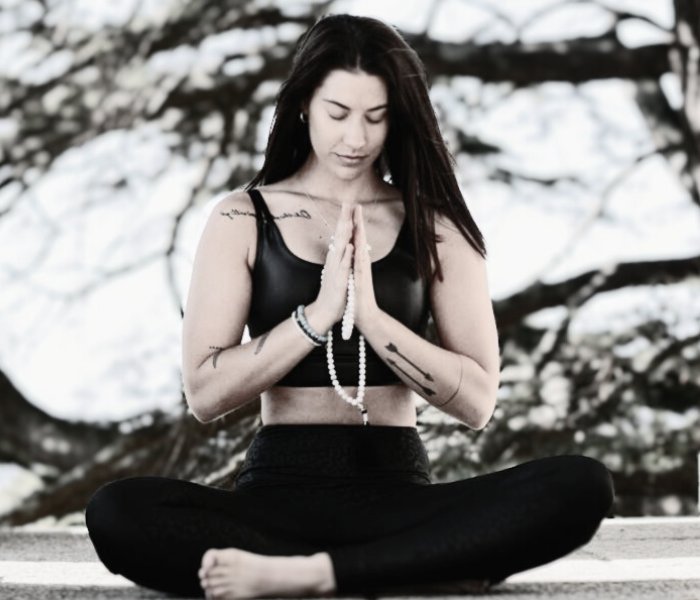posture, yoga, and trauma/stress recovery – blending psychology & spirituality

trauma stress anxiety recovery through yoga & breathing
In my practice as a Mental Health Counselor, I have observed how trauma, stress, and anxiety influence posture. As soon as a client walks into my office, I notice these concerns in their gait and expressions. Also, in my work at a yoga teacher, I encounter healthy individuals with postural abnormalities that mimic a state of trauma, stress, or anxiety.
Long workdays in office settings lead to poor posture. Throughout the day, individuals slouch in their chairs, hover over computers, or stoop down to scroll through their phones. Without conscious awareness of the body, our shoulders tend to roll forward, our muscles tense, and we lose the breath’s fullness. The problem is, the body does not know the difference between our poor posture and a traumatic state.
Trauma is Energy
Trauma causes the body to shut down. Often trauma is the result of a significant, life-altering event. Trauma may also be a series of experiences that change how we perceive and interact with the world. Trauma alters our perceptions of safety and can unfold over time, changing our lives and minds in hard to witness.
Core Energetics, developed by John Pierrakos, M.D., has provided a lens to view psychological issues from a spiritual perspective. Core Energetics is based on the belief that humans are driven by energy. Energy becomes blocked as a result of self-protection from experiences in early relationships. The cause of these energetic blocks might be what is referred to in modern psychology as trauma. Core Energetics’ goal is to assist individuals in moving towards embodiment and consciousness (Gleason & Loustaunau, 2015).
Echoing this theory is Somatic Experiencing, developed by Peter Levine. In his book, Waking the Tiger: Healing Trauma (1997), he describes trauma symptoms as stuck energy. This theory is based on the belief that energy is created in reaction to trauma. After the trauma has occurred, if the energy is not expended, it will become stuck. Trauma survivors become attracted to dangerous situations in hopes of relieving themselves of the energy.
However, these attempts are unsuccessful without proper techniques to release energy. We will discuss these techniques in further detail later.
Trauma is in the Body
In the psychological world, therapies that acknowledge the mind-body connection are referred to as somatic therapies. Somatic therapies are grounded in the belief that trauma, stress, and anxiety are stored in the body. Somatic theory suggests that trauma alters posture, facial expression, non-verbal communication, and can lead to muscle pain and other issues (Good Therapy, 2017).
In his widely acclaimed book, The Body Keeps the Score, Bessel Van Der Kolk, M.D., (2014) shares how trauma changes the body. He breaks down the body-mind connection through the use of neuroscience and biology. He states that yoga has the potential to increase self-awareness. This awareness will lead to the ability to notice how the emotions and body are connected.
How Posture Represents Trauma
Sônia Maria Gomes Silva (2014) writes that our posture is responsible for interacting with the world. Our muscles, which control our facial expressions and body postures, remain under voluntary control. Therefore, they act as a primary mode of communication and self-protection. There is a two-way system of communication between emotions and muscle. Emotions may cause muscles to tighten, and our outward expression of posture changes as a result. Alternatively, as our muscles tighten and create tension in the body, this can impact our emotions.
I have also noticed how stress, trauma, and anxiety live in the body. There is an interconnected network of tissues that run along the body called fascia. The postures we assume on a day-to-day basis cause the fascia to harden around these postures. Think of healthy fascia like a wet sponge, malleable yet firm. Imagine damaged fascia like a dried sponge, rigid and inflexible.
A form of healing called Myofascial Release has been developed to address how trauma impacts fascia and posture. John Barnes, P.T., L.M.T., believes that Myofascial release has the power to release trauma from the body. He likens this therapy to the completion of the trauma cycle developed by Peter Levine. This process is said to repair abnormalities in the posture caused by trauma.
Yoga Heals Trauma and Posture Abnormalities
Deep Belly Breathing
When the body enters a state of stress, breathing becomes shallow. Frequently, people begin breathing in the chest. Breathing deeply into the belly is a way to tap into resilience and reverse the stress-response cycle.
In his popularized Polyvagal Theory, Stephen Porges writes about the importance of breathing to enter a state of calm after traumatic stress. This is achieved by activating the vagus nerve. Ways to activate the vagus nerve include chanting, singing, connection with others, and mindful breathing with longer exhales than inhales (Abramson, 2020).
Take a moment and try this out this deep belly breathing exercise, otherwise known as diaphragmatic breathing.

Roll your shoulders back and open up your chest. Begin to relax the muscles. Start with the feet and work up to the head. Sit up tall and allow your breath to flow freely. Send your breath into the lowest part of the abdomen. It may take time if the lungs have adapted to shallow chest breathing.
If you are struggling to notice where the breath is flowing, place a palm to your chest and belly. Notice which hand moves the most. Attempt to exaggerate the movement in the abdomen, filling up the stomach like a balloon. Many people still struggle to breathe into their low belly from a seated position.
It can be helpful to lay on your back with your feet on the floor, hip-width apart. Your knees can fall together or stay apart, whatever feels most comfortable. Allow your bellow to remain relaxed and your spine to remain neutral. You may rest one hand on your chest and one hand on your belly.
Also Read>>> How yoga helps heal in trauma recovery
Asana
Everyone can benefit from yoga poses that open areas of the body impacted by stress, trauma, and anxiety. Since most of us spend hours seated at a desk, these muscles may be chronically tight. If you notice these poses cause soreness or tension, back off or try a modified version of each pose. Over time, the fascia will become less rigid, and the postures should feel less intense.
It can help create a daily routine of opening the hips, chest, shoulders, and heart-space. If you are new to yoga, try these poses under the guidance of a Yoga Teacher. Some of these poses may be too advanced for beginners.
Try these poses after a few sun salutations and cat/cow movements to warm the body:
• Child’s Pose
• Upward Facing Dog
• Low Lunge
• Humble Warrior
• Standing Figure Four Pose
• Wild Thing
• Camel Pose
• Cow Face Pose with Shoulder Opener
• Reclining Pigeon Pose
• Locust Pose
• Bow Pose
• Bridge Pose
• Corpse Pose
Props
Another great pose is supported fish. This posture serves to open the chest, relax the shoulders, and it will help to facilitate deep belly breathing. The supported fish pose may be achieved by placing a yoga block lengthwise at the space between the shoulders and rib cage. For extra support, the head may rest on a second yoga block.
For those unfamiliar with yoga, laying your spine lengthwise on a foam roller and making snow-angels with your arms in sweeping motions can assist in releasing tension. A yoga teacher, physical therapist, or chiropractor may also provide additional support.
Also Read>>> How to use Yoga Blocks
Organic Movement
In his book, Peter Levine (1997) shares how ancient shamanic cultures utilized shaking during healing ceremonies. He also describes how, after life-threatening events subside, animals in the wild will shake. The shaking will occur multiple times and begin as a slight movement in the head and work its way down to the legs.
While I find shamanic shaking practice highly impressive, for the general reader, I understand this may not be a practical tip. However, in the Western world, dance is accessible to every culture, ability, age, and gender.

Please turn on your favorite song and vow to move until it has finished. It might look like shaking your hands, hips, head, or the whole body. It might be a gentle sway side to side. It could even include a flow of your favorite yoga poses. Whatever your version of organic movement looks like, allow yourself a moment to express whatever your body has been holding onto!
Conclusion
There is an unlimited number of ways the brain and body communicate. Something as simple as changing our posture may unlock a new communication way between the mind and body. Making simple changes to our posture throughout the day can make a world of difference to those living with stress, trauma, and anxiety. Sometimes, it is the most straightforward daily changes that make all the difference.
References: Abramson, A. (2020, April 10). If there ever was a time to activate your vagus nerve, it is now. Elemental Medium.
Barnes, J. (n.d.). Flight/fight/freeze. Mind & Body.
Maria Gomes Silva, S. (2014). Engaging touch and movement in somatic experiencing® trauma resolution approach.
Gleason, B., Loustaunau L. (2015). Sage Encyclopedia of Theory in Counseling and Psychotherapy, Core Energetics entry.
Good Therapy, (2017, July 21). Somatic psychotherapy.
Levine, P. A. (1997). Waking the Tiger: Healing Trauma. North Atlantic Books.
Van Der Kolk, B. (2014). The body keeps the score. Penguin Books.



